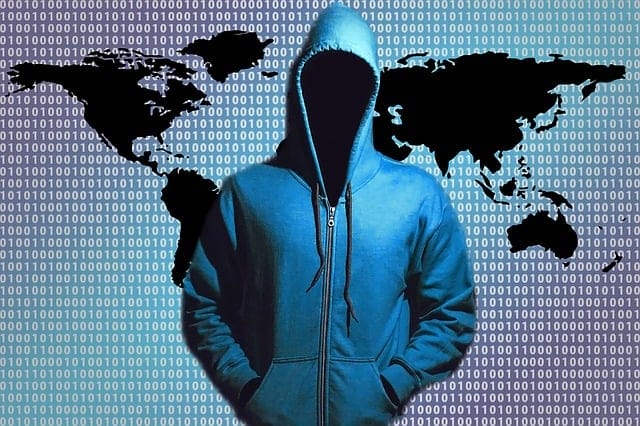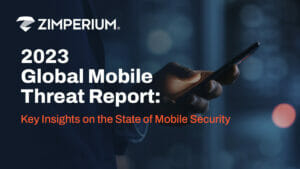
“Cozy Bear” refers to a sophisticated cyber espionage group known by its technical designation APT29 (Advanced Persistent Threat 29). Notoriously linked to Russian intelligence services, this group has been active since at least 2008. It is known for its advanced cyber-attack capabilities, primarily targeting government, diplomatic, think-tank, healthcare, and energy organizations for intelligence gathering.
Cozy Bear’s Objectives
Cyberespionage
Gathering intelligence on foreign governments, businesses, and organizations. This intelligence can be used for various purposes, such as:
- Strategic decision-making: Informing the Russian government’s foreign policy and military strategies.
- Economic advantage: Stealing intellectual property and trade secrets to benefit Russian businesses.
- Sowing discord: Disrupting and undermining foreign governments and institutions.
- Maintaining long-term access: Cozy Bear often aims to establish persistent footholds in targeted networks, allowing them to collect intelligence over extended periods.
Cozy Bear’s Rumored Links to the Russian Government
- Attribution: While the Russian government denies involvement, multiple intelligence agencies and cybersecurity firms have attributed Cozy Bear’s activities to the Russian Foreign Intelligence Service (SVR). This attribution is based on technical evidence, operational patterns, and historical targeting.
- Capabilities: Cozy Bear’s advanced capabilities, access to zero-day exploits, and persistence point towards state-sponsored resources and sophisticated training.
- Targets: Cozy Bear frequently targets entities of strategic interest to the Russian government, such as government agencies, defense contractors, and critical infrastructure providers.
- Timing: Many Cozy Bear attacks coincide with geopolitical events where Russia seeks an advantage.
Cozy Bear’s Importance for Mobile App Developers in Enterprises
For mobile app developers, especially those working on applications for large enterprises such as e-commerce companies or retail banks, understanding the tactics, techniques, and procedures (TTPs) of groups like Cozy Bear is crucial. These insights are vital for:
- Enhancing Security Measures: Cozy Bear’s sophisticated techniques, including spear phishing, malware deployment, and exploitation of software vulnerabilities, should inform the security strategies employed in mobile app development. Developers need to build apps that are resilient against such attack vectors.
- Compliance and Trust: Large enterprises often operate under strict regulatory frameworks. Knowledge of APT threats helps align the app’s security features with industry standards and regulations, fostering trust among users and stakeholders.
- Targeted Threat Intelligence: Understanding the specific interests of APT groups like Cozy Bear can help anticipate the kind of data or access they might target, enabling developers to implement focused security measures.
Understanding the Threat Landscape from Cozy Bear
Cozy Bear specializes in long-term espionage operations, utilizing a mix of custom and publicly available malware tools. They are adept at maintaining persistence in compromised networks, often undetected for extended periods. For mobile app developers, this highlights the need for:
- Continuous Monitoring and Updating: Implementing constant monitoring of app ecosystems and regularly updating apps to patch vulnerabilities.
- Advanced Threat Detection: Employing advanced threat detection mechanisms that can identify subtle signs of a breach.
Cozy Bear’s History and Major Attacks
- Emergence and Early Operations (2008-2014): Cozy Bear’s initial activities involved low-profile espionage operations, primarily targeting diplomatic and government entities. These early operations were characterized by custom malware and spear-phishing campaigns.
- US Government and DNC Hack (2015-2016): One of Cozy Bear’s most prominent operations was infiltrating the United States Democratic National Committee (DNC). Utilizing sophisticated spear-phishing techniques and exploiting network vulnerabilities, they gained access to sensitive information, which was later publicly disclosed.
- SolarWinds Attack (2020): In a landmark operation, Cozy Bear compromised the SolarWinds Orion software, a widely used network management tool, effectively turning it into a Trojan horse to infiltrate numerous US government agencies and corporations. This attack underscored the group’s ability to execute supply chain attacks, exploiting the interconnected nature of modern software ecosystems.
- Hewlett-Packard Enterprise (HPE) Attack (2024): On January 12, 2024, Cozy Bear is suspected of compromising a “small percentage” of mailboxes bellowing to HPE employees in cybersecurity, go-to-market, business segments, and other functions. Cozy Bear is believed to have exfiltrated data beginning in May 2023. This HPE incident follows a similar attack on Microsoft, also reported on the same day, where Cozy Bear targeted senior executives and cybersecurity personnel. The nature of the stolen data remains unclear, and HPE continues investigating the break and its potential impact.
Cozy Bear’s Common Cyberattack Tactics
- Spear Phishing: Cozy Bear frequently initiates its attacks through spear-phishing emails. These emails, tailored to appear legitimate, trick recipients into revealing credentials or installing malware.
- Exploitation of Software Vulnerabilities: The group exploits known and zero-day vulnerabilities in popular software to gain unauthorized access to target networks.
- Use of Custom and Advanced Malware: Cozy Bear develops and deploys various custom malware tools for stealth and persistence. These tools often have capabilities for lateral movement, data exfiltration, and evading detection.
- Supply Chain Attacks: By targeting widely used software (as seen in the SolarWinds attack), Cozy Bear can simultaneously compromise many organizations, demonstrating their strategic approach to cyber espionage.
Cozy Bear Attacks: Lessons Learned for Mobile Application and Device Security
- Vigilance Against Spear Phishing: Security training for staff and users should emphasize the identification of phishing attempts. Mobile applications should incorporate security features that detect and warn about potential phishing links.
- Regular Software Updates and Patch Management: Keeping all software up-to-date, especially on mobile devices and applications, is crucial in preventing the exploitation of known vulnerabilities.
- Enhanced Supply Chain Security: Rigorous vetting of third-party vendors and components used in mobile applications is essential to mitigate the risk of supply chain attacks.
- Implementation of Advanced Security Measures: Deploying advanced security solutions, such as AI-driven threat detection systems and behavior analytics, can help identify and respond to sophisticated attack techniques.
- Incident Response and Recovery Plans: A robust incident response plan that includes mobile applications and devices ensures that the organization can quickly contain and recover from any security breach.
Cozy Bear’s sophisticated and evolving tactics present a clear threat to enterprise mobile applications and devices. Security professionals must adopt a multi-layered defense strategy, combining technical measures, employee training, and proactive threat intelligence. Understanding the group’s historical operations and adapting to their evolving tactics is vital to safeguarding enterprise mobile ecosystems against such advanced persistent threats.
Mobile Security Best Practices and Emerging Trends
- Security by Design: Integrate security into every stage of the app development process rather than treating it as an afterthought.
- AI and Machine Learning: Utilize AI and machine learning algorithms for predictive analytics and anomaly detection, enhancing the app’s ability to identify potential threats preemptively.
- Collaboration and Information Sharing: Engage in industry collaborations and threat information sharing to stay abreast of the latest TTPs employed by groups like Cozy Bear.
For mobile app developers in enterprise environments, understanding and adapting to the threats posed by sophisticated actors like Cozy Bear is not just about protecting data. Still, it is integral to maintaining the integrity and trustworthiness of their applications. It requires technical understanding, continuous learning, and proactive security measures, ensuring that the applications they develop are functionally user-friendly but also secure and resilient against advanced cyber threats.
